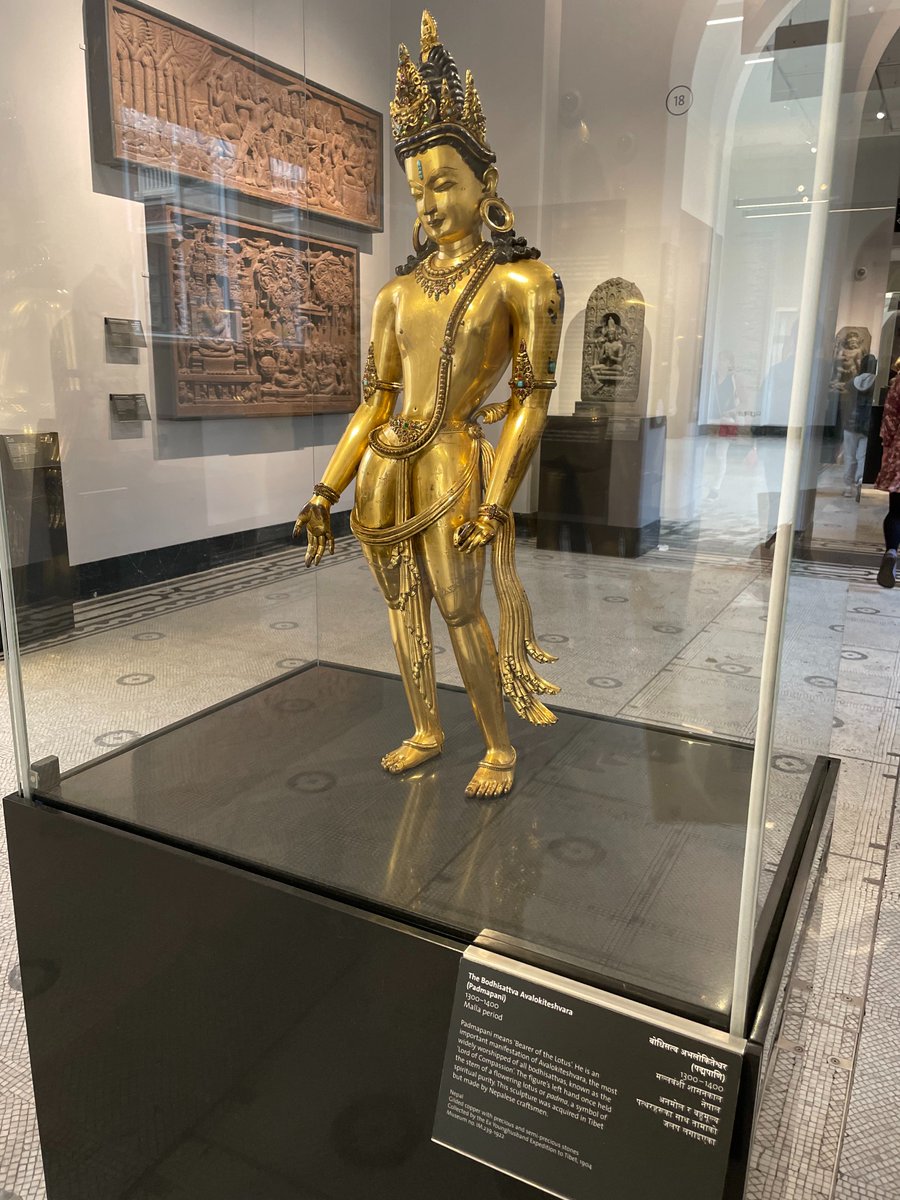The label on this stunning sculpture in London's Victoria and Albert Museum notes it was "collected by the Ex Younghusband Expedition to Tibet, 1904." A short 🧵 about the horrors this polite wording conceals. https://t.co/beAYU4rcPr


In 1903, Sir Francis Edward Younghusband led a British force to invade Tibet on the flimsiest of pretexts. At Chumik Shenko, his troops used Maxim machine guns to kill c. 600 Tibetan soldiers armed with matchlock muskets. https://t.co/u2FBk2vsWU

Younghusband eventually withdrew, chided by his superiors and excoriated by the English public for the needless violence. Even the Encyclopedia Britannica is still giving him side-eye: https://t.co/xOGSrBFSqS

As Charles Allen showed by researching British primary sources (in his 2015 book Duel in the Snows), the invaders looted monasteries along their route, in supposed reprisal for inciting resistance to the invasion.
At the Tsechen monastery, "I at once made for the cel-
lars," one soldier wrote his mother, "where we found some things hidden away.... I got rather a nice gong which no doubt you will find useful when I am able to get it home." https://t.co/Di6PC7NYjy

A captain wrote his wife that he had secured a "few
trifles" from the monastery, including paintings that fetched high prices when auctioned at Christie's
later in 1904. The Brits then burned the monastery to the ground. https://t.co/xvK13dQpxe

An astounding instance of looting happened at the Pelkor Chode Monastery at Gyantse, Tibet. Major William Beynon described it in a letter to his wife, which I'll quote at length: "Ross 2nd Gurkhas was in the big monastery here and was looking for grain with his coolie corps... https://t.co/1akDXyObnM

...when one of his men was stoned by a Lama. They caught the beggar and tied him up & gave him 20 lashes on the spot and then told him if he didn't show where the grain was hid he would be shot. So he showed them two places very cleverly hidden...
but when Ross began to get the things out he found instead of grain that the man had shown him where the monastery's plate & robes were kept. Ross reported to the General who told him he might keep what he liked and to send the rest to the man who collects for the British Museum.
(end quote). This man who collected for the British Museum was L. Austine Waddell, who wrote home sneering about how "there was nothing the people were not willing to sell in exchange for rupees." He claimed that
"Even the sleek Lamas brought out their sacred scrolls and books and images and bargained them for cash, and everybody seemed supremely pleased, never having had so much money in their lives before" - without regard to what they feared might happen if they said no.
And what about the Bodhisattva in the V&A? The museum's webpage gives just a scrap of info about how it left Tibet, leaving you with the impression that it was a willing sale. https://t.co/UQjEhqCLGg


FYI, many people have written much more about looting during the Younghusband Expedition, for example, @oxfordtim's articles http://himalaya.socanth.cam.ac.uk/collections/journals/ret/pdf/ret_21_07.pdf, https://www.jstor.org/stable/24572147, and https://brill.com/view/journals/inas/14/1/article-p61_4.xml (which includes Tibetan primary sources).
Do I know what should change about the @V_and_A's holding/description of the Bodhisattva? No. But I think it must - because "acquired" is not the word to describe a transaction in which one party probably rightly feared being whipped or machine-gunned if they said no.
(I will also add by thanks to my friend @_MTAnderson, who first told me about looting during the Younghusband Expedition, and looked through his notes to find these quotes when I sent him the photo of the V&A label.)
